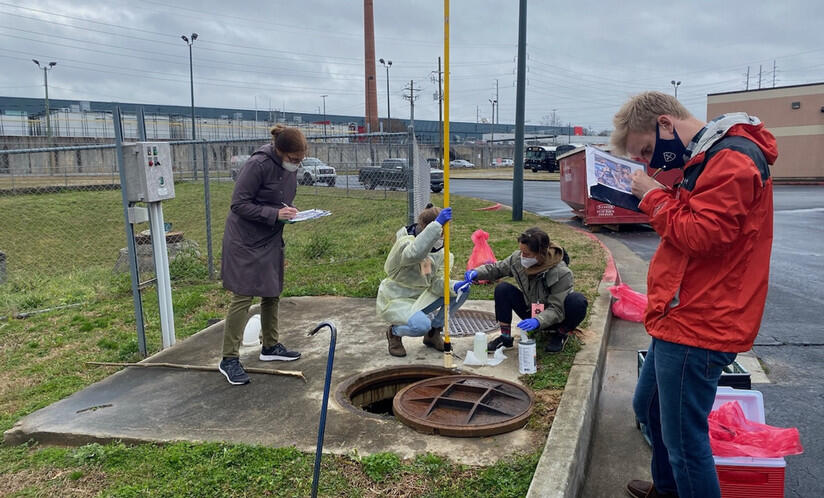
Caption
In the beginning of the coronavirus pandemic, scientists realized the virus was shed in high quantities in wastewater, even though COVID-19 is a respiratory disease.
Credit: Emory Rollins School of Public Health
LISTEN: Georgia public health officials and residents can access free local data about pathogens, viruses and bacteria levels using WastewaterSCAN, a national wastewater monitoring network. GPB’s Ellen Eldridge has more.

In the beginning of the coronavirus pandemic, scientists realized the virus was shed in high quantities in wastewater, even though COVID-19 is a respiratory disease.
In the beginning of the coronavirus pandemic, scientists realized the virus was shed in high quantities in wastewater, even though COVID-19 is a respiratory disease.
Wastewater surveillance can also detect and quantify viruses such as mpox, norovirus and respiratory syncytial virus (RSV), said Marlene Wolfe, an assistant professor of environmental health at Emory University and co-program director for WastewaterSCAN.
"There are so many things that go down our toilet, our shower, our sink, when you make food, brush your teeth, go to the bathroom," she said. "All of those contributions go down into the sewer system."
By sampling wastewater collected at a treatment plant, public health officials can interpret levels of different diseases to understand outbreaks and the characteristics of when they're starting, peaking, concluding, and what the relative magnitude of the outbreak is compared to last year.
It's at a community level, and it's very cost effective because one sample represents tens of thousands to millions of people at a time, Wolfe said.
There are a lot of different ways to gather information about an outbreak, such as passive information for outbreaks of gastrointestinal illnesses, she said.
"The way we find out about them is that there's just a lot of people who are showing up to their doctor's office feeling sick, but it also might even be something like all the Pepto-Bismol is sold out at the local store," she said. "And that's the thing that makes us aware of an outbreak."
Influenza A is low in Georgia and across the South, but the state is seeing some influenza B activity, and SARS-CoV-2, which causes COVID-19, is at a medium level.
The website also reports low, medium and high concentrations of Candida auris (C. auris), which Wolfe said is an opportunistic drug-resistant fungal pathogen that is not typically of concern to the general public, but is in health care settings among immunocompromised people.